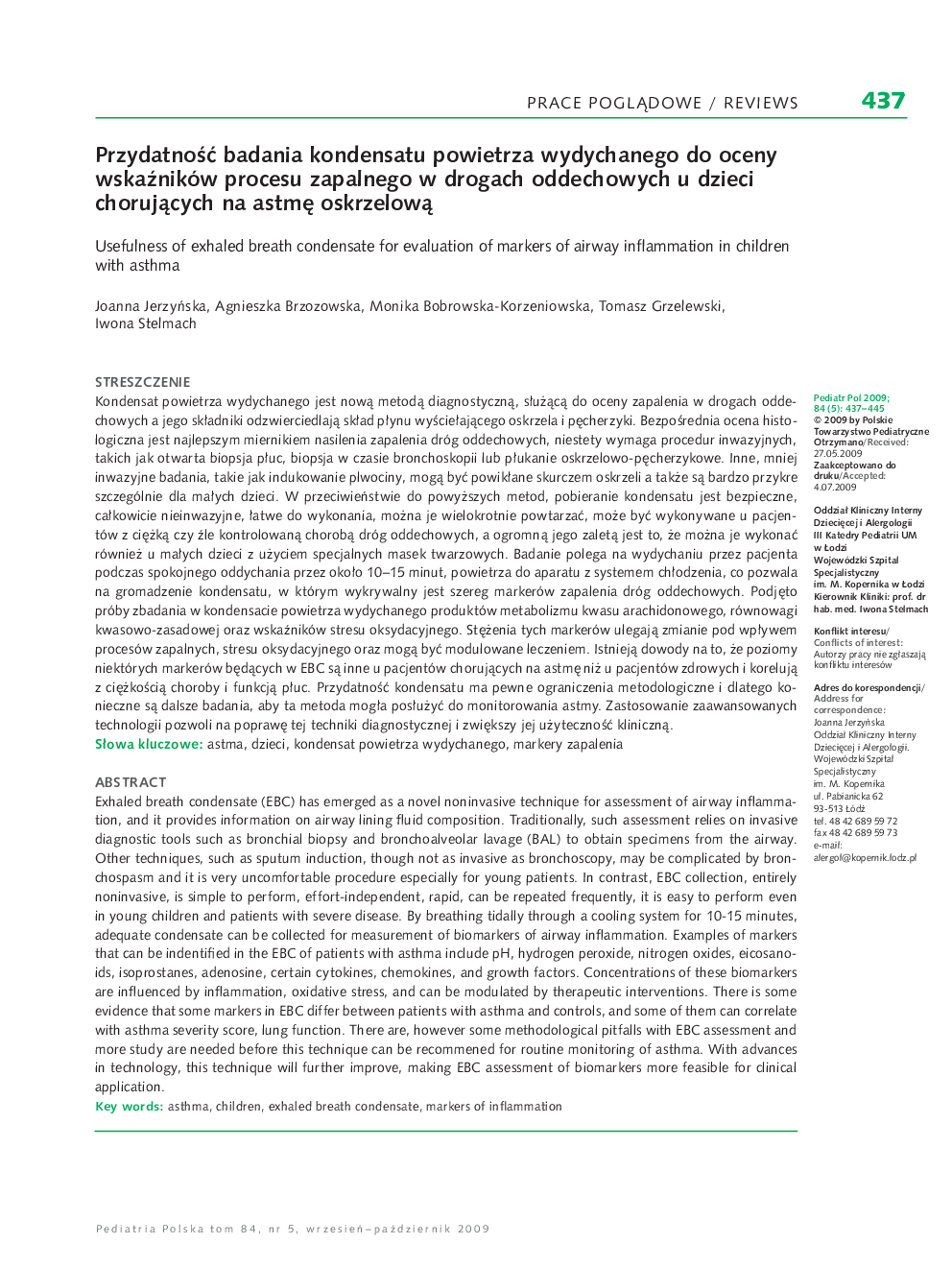| Article ID | Journal | Published Year | Pages | File Type |
|---|---|---|---|---|
| 2680143 | Pediatria Polska | 2009 | 9 Pages |
Abstract
Exhaled breath condensate (EBC) has emerged as a novel noninvasive technique for assessment of airway inflammation, and it provides information on airway lining fluid composition. Traditionally, such assessment relies on invasive diagnostic tools such as bronchial biopsy and bronchoalveolar lavage (BAL) to obtain specimens from the airway. Other techniques, such as sputum induction, though not as invasive as bronchoscopy, may be complicated by bronchospasm and it is very uncomfortable procedure especially for young patients. In contrast, EBC collection, entirely noninvasive, is simple to perform, effort-independent, rapid, can be repeated frequently, it is easy to perform even in young children and patients with severe disease. By breathing tidally through a cooling system for 10-15 minutes, adequate condensate can be collected for measurement of biomarkers of airway inflammation. Examples of markers that can be indentified in the EBC of patients with asthma include pH, hydrogen peroxide, nitrogen oxides, eicosanoids, isoprostanes, adenosine, certain cytokines, chemokines, and growth factors. Concentrations of these biomarkers are influenced by inflammation, oxidative stress, and can be modulated by therapeutic interventions. There is some evidence that some markers in EBC differ between patients with asthma and controls, and some of them can correlate with asthma severity score, lung function. There are, however some methodological pitfalls with EBC assessment and more study are needed before this technique can be recommened for routine monitoring of asthma. With advances in technology, this technique will further improve, making EBC assessment of biomarkers more feasible for clinical application.
Related Topics
Health Sciences
Medicine and Dentistry
Dermatology
Authors
Joanna JerzyÅska, Agnieszka Brzozowska, Monika Bobrowska-Korzeniowska, Tomasz Grzelewski, Iwona Stelmach,
